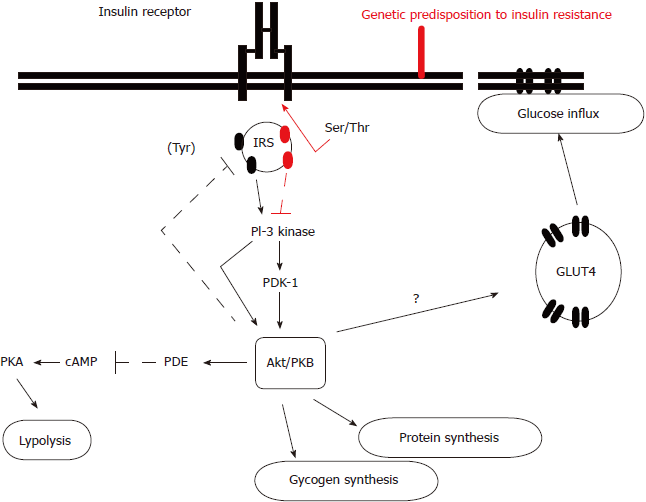Copyright
©The Author(s) 2018.
World J Diabetes. Dec 15, 2018; 9(12): 209-219
Published online Dec 15, 2018. doi: 10.4239/wjd.v9.i12.209
Published online Dec 15, 2018. doi: 10.4239/wjd.v9.i12.209
Figure 1 The molecular mechanism of insulin resistance.
In insulin resistance, the binding of insulin to its receptor does not result in serine phosphorylation of insulin receptor substrate-1 and activation of the cascade of intracellular substrates’ activation which result in glucose influx, glucagon and protein synthesis, and lipolysis inhibition. IRS: Insulin receptor substrate; Ser/Thr: Serine/threonine protein kinase; Tyr: Tyrosine kinase; PI-3: Phosphatidylinositol 3; PDK-1: Phosphoinositide-dependent protein kinase-1; Akt/PBK: AKT serine/threonine kinase 1 (protein kinase B family); PDE: Phosphodiesterase; cAMP: Cyclic adenosine monophosphate; PKA: Protein kinase A; GLUT4: Glucose transporter type 4.
- Citation: Blaslov K, Naranđa FS, Kruljac I, Renar IP. Treatment approach to type 2 diabetes: Past, present and future. World J Diabetes 2018; 9(12): 209-219
- URL: https://www.wjgnet.com/1948-9358/full/v9/i12/209.htm
- DOI: https://dx.doi.org/10.4239/wjd.v9.i12.209









